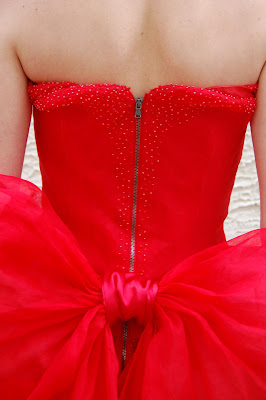Supplies...

- Bulk Plaster Gauze 4in x 135 feet [at least]
- Plastic Tub
- Small amount of water
- Sharp Scissors [other sites will say you need bandage scissors, really good ones are pricey, and cheap ones at a local drug store will fall apart, halfway through]
- Plastic drop cloth
- Plastic wrap [from local supermarket]
- Plastering assistant [human you are comfortable with]
- Portable heater
- Rubber bands
- Permanent marker
Let the mummification begin...
Cut plaster roll into strips. It took about 80 - 4 x 14 and 20 - 4 x 8 inch strips to wrap me in 3 layers of plaster. I am size 2, so calculate according to your size. [Have it ready, you don't want your plastering assistant to stop and have to cut more.]
Wear a tight tee shirt. The kind that fits you in every spot, and one you don't mind parting with--it won't be so pretty after you are done with it. Also wear short tights, or regular underwear.
Stand straight. [My natural posture is to stand like a gymnast, that will not work for a good dress form. Straight as in your back straight against the wall. You didn't just do a dismount ;)].
Wrap plastic wrap from the hips [below the bum or however low you want it to go] to right under the chest. Do not wrap your chest. Why? It will flatten it and look unnatural [or like a 13 year old boy...hehehe].
Wet one strip at a time and start wrapping from the bottom up. You will need to do 3 layers. Horizontal, vertical and another horizontal. Start every new layer from the bottom. [Do not wiggle. As a matter of fact don't breathe].
The plaster will start to become colder as it dries. You will start to feel confined and very uncomfortable. Your natural reaction will be to do only 2 layers so this goes faster, but that won't be enough [the cast will fall apart in places when you try to cut it off].
The cast should feel dry to the touch. The portable heater will help speed drying and will keep you warm at the same time.
When all that's done, mark at the sides of the cast [some say to cut at the chest and back, I don't think those are good places]. Try to find the center of the mass and cut the cast in half at the sides. [While the cast dries, it attaches itself to your shirt. So your shirt will get holes when the form is cut away].
Once the cast if off you, gently put it back together, wrap it with plastic wrap around the waist, use a rubber band around the neck and arms, stand it [do not lay] and let it dry for 24 hours.
time....We had to do two casts. The first one didn't come out as planned. Posture and chest came out deformed. It really looked nothing like me. It also took about 3.5 hours from start to finish. And my back was killing me since I stood like a gymnast the entire time. For the second cast, we knew what went wrong and corrected all the issues. It also took "only" 1 hr 20 min to wrap and another hour for drying.
tips...Several smaller cut strips work better around the armhole and neck. Try to cast on a non-damp day, as the plaster will dry faster.
options....with or without arms. Without is true to a real form. An arm can be made separately.







































